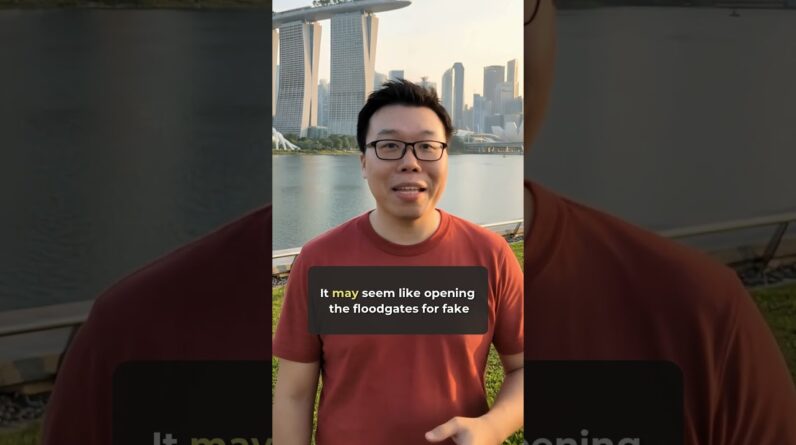
You may have invested time and resources into improving your website’s search engine optimization (SEO), but how do you truly know if it’s paying off? Determining the return on investment (ROI) of your SEO efforts can be a tricky task, but it’s crucial for understanding the effectiveness of your strategies. In this article, we will explore various methods and metrics that can help you measure the ROI of your SEO efforts, allowing you to make informed decisions and optimize your website for maximum success.
Understanding SEO ROI
Defining SEO ROI
SEO ROI, or Search Engine Optimization Return on Investment, is a metric used to measure the effectiveness and profitability of your SEO efforts. It quantifies the return you receive from the money and time invested in optimizing your website for search engines. SEO ROI helps you understand the impact of your SEO strategies on your business’s bottom line and enables you to make data-driven decisions.
Importance of measuring SEO ROI
Measuring SEO ROI is crucial for several reasons. Firstly, it provides tangible evidence of the value your SEO efforts bring to your business. By understanding the ROI, you can assess whether your SEO strategies are delivering the desired results and adjust your approach accordingly. Moreover, measuring SEO ROI helps you prioritize your resources, allowing you to allocate investments to the strategies that yield the highest return.
Challenges in measuring SEO ROI
While measuring SEO ROI is essential, it can be challenging due to the complex nature of search engine algorithms and the multitude of factors that influence organic search rankings. Additionally, SEO efforts may take time to show results, making it difficult to attribute specific outcomes directly to SEO activities. However, by utilizing the right tools and methodologies, you can overcome these challenges and gain valuable insights into your SEO performance.
Key Metrics for Measuring SEO ROI
To accurately measure SEO ROI, it’s important to track and analyze various key metrics. Here are some essential metrics that indicate the success of your SEO efforts:
Organic website traffic
Organic website traffic refers to the number of visitors who arrive at your website through organic search results. Monitoring the organic traffic trend helps you evaluate the effectiveness of your SEO strategies. An increase in organic traffic signifies that your website is ranking higher in search engine results pages (SERPs), attracting more visitors, and potentially leading to greater conversions.
Keyword rankings
Monitoring your keyword rankings allows you to assess how well your website performs in SERPs for target keywords. Higher rankings for relevant keywords can lead to increased visibility and organic traffic. By tracking and optimizing your keyword rankings, you can gain insights into the effectiveness of your SEO efforts and make data-driven decisions to improve your rankings.
Conversion rate
The conversion rate measures the percentage of website visitors who complete a desired action, such as making a purchase, filling out a form, or subscribing to a newsletter. By monitoring the conversion rate, you can evaluate the quality of your website traffic and assess how effectively your SEO efforts are driving actions that align with your business goals.
Bounce rate
Bounce rate represents the percentage of visitors who leave your website after viewing only one page. A high bounce rate may indicate that visitors are not finding the information they are looking for or that your website is not effectively engaging them. By analyzing and reducing the bounce rate, you can improve user experience and increase the likelihood of conversion.
Average session duration
Average session duration measures how long visitors spend on your website. A longer average session duration indicates that visitors are engaging with your content, suggesting that it is relevant and valuable. By optimizing your website to increase the average session duration, you can enhance user experience and potentially drive more conversions.
New vs. returning visitors
Understanding the proportion of new and returning visitors provides insights into the effectiveness of your SEO strategies in attracting both new prospects and retaining existing customers. By segmenting and analyzing this data, you can evaluate the success of your SEO efforts in driving customer acquisition and retention.
Cost per acquisition (CPA)
CPA measures the cost incurred to acquire a new customer through your SEO efforts. By calculating the CPA, you can assess the efficiency and profitability of your SEO campaigns, enabling you to optimize your resources and focus on strategies that drive more conversions at a lower cost.
Revenue and sales
Measuring the revenue and sales directly attributable to your SEO efforts provides a clear picture of the return on your investment. By tracking the revenue generated from organic search traffic, you can determine the profitability of your SEO campaigns and make informed decisions about resource allocation.
Customer lifetime value (CLV)
CLV represents the projected total revenue a customer is likely to generate throughout their relationship with your business. By evaluating the CLV of customers acquired through SEO, you can understand the long-term impact of your SEO efforts on revenue and make strategic decisions to enhance customer retention and loyalty.
Brand visibility and awareness
While brand visibility and awareness may be challenging to measure directly, they are vital metrics to assess the impact of your SEO efforts on brand recognition and perception. Higher visibility in search engine results contributes to increased brand exposure, which can lead to enhanced trust, credibility, and subsequent conversions.
Setting Up Tracking and Analytics
To effectively measure SEO ROI, it’s crucial to set up tracking and analytics systems that provide comprehensive data. Here are some key tools and techniques for tracking and analyzing SEO metrics:
Google Analytics
Google Analytics is a free and powerful tool that provides detailed insights into your website’s performance. It allows you to track various SEO metrics such as organic traffic, keyword rankings, conversion rate, and more. By implementing Google Analytics on your website, you can access valuable data to measure and improve your SEO ROI.
Tag Managers
Tag managers, such as Google Tag Manager, allow you to easily manage and deploy tracking codes and tags on your website without modifying the code directly. They streamline the process of implementing tracking scripts, enabling you to collect data accurately and efficiently.
Goal and event tracking
Setting up goals and events in your analytics platform helps you track specific actions that align with your business objectives. For example, you can track the number of newsletter sign-ups or completed purchases. By measuring the conversion rates of these actions, you can evaluate the effectiveness of your SEO efforts in driving desired user behavior.
UTM parameters
UTM parameters are tags added to your URLs that enable you to track the source, medium, and campaign-specific information of your website traffic. By utilizing UTM parameters, you can gain insights into the performance of different marketing channels and campaigns, allowing you to measure the ROI of your SEO efforts accurately.
Conversion tracking
Implementing conversion tracking, either through Google Ads or other advertising platforms, allows you to track the conversions generated by your SEO campaigns. By defining and measuring conversions, you can evaluate the impact of your SEO efforts on driving desired actions, such as purchases or form submissions.
Heatmaps and session recordings
Heatmaps and session recordings provide visual representations of user behavior on your website. Heatmaps help you identify which areas of your webpages receive the most attention, while session recordings show how users interact with your website. By analyzing these insights, you can identify areas for optimization and enhance user experience.
Calculating SEO ROI
Calculating SEO ROI involves determining the investment made in SEO activities and measuring the revenue generated as a result. Here are key components and methodologies for calculating SEO ROI:
Determining SEO investment
To calculate SEO ROI accurately, it’s important to evaluate the resources and expenses allocated to SEO initiatives. This includes considering the costs of hiring SEO professionals, investing in SEO software, creating content, and optimizing your website. By quantifying these investments, you can assess the ROI more effectively.
Calculating SEO revenue
Measuring the revenue specifically generated from SEO efforts requires careful analysis and attribution techniques. By using tracking tools and advanced analytics methodologies, you can identify the revenue directly attributable to organic search traffic and estimate the contribution of SEO to your overall revenue.
ROI formula
The formula for calculating ROI is:
ROI = (SEO revenue – SEO investment) / SEO investment * 100
By plugging in the values for SEO revenue and investment, you can determine the percentage ROI for your SEO efforts. A positive ROI indicates that your SEO activities are generating more revenue than the invested costs, while a negative ROI suggests the need for adjustments or improvements.
Attribution modeling
Attribution modeling refers to the process of assigning value to each marketing touchpoint along the customer journey. In the context of SEO ROI, attribution modeling helps you understand how various interactions and channels contribute to conversions and revenue. By utilizing different attribution models, such as first-click, last-click, or multi-touch, you can gain insights into the effectiveness of your SEO strategies at different stages of the customer journey.
Understanding timeframes
It’s important to consider the timeframe when calculating SEO ROI. SEO results often take time to materialize, and the impact of SEO efforts may extend beyond the initial timeframe of measurement. By analyzing data over different time periods, you can gain a more comprehensive understanding of the long-term ROI of your SEO initiatives.
Analyzing and Interpreting SEO ROI Data
Once you have calculated your SEO ROI, it’s essential to analyze and interpret the data to extract meaningful insights. Here are some strategies for analyzing and interpreting SEO ROI data:
Comparing pre and post-SEO data
By comparing data from before and after implementing SEO strategies, you can evaluate the impact of your efforts. Look for changes in metrics like organic traffic, keyword rankings, conversion rates, and revenue to assess the effectiveness of your SEO campaigns. This comparison allows you to identify trends and patterns that can inform future strategies.
Identifying trends and patterns
Analyzing your SEO ROI data over time helps you identify trends and patterns that can provide valuable insights. Look for correlations between specific SEO activities and changes in metrics. For example, a sudden increase or decrease in organic traffic after implementing a specific SEO tactic may indicate its impact on SEO ROI. Identifying such patterns can guide your future SEO strategies.
Segmenting data for deeper insights
Segmenting your SEO ROI data enables you to gain deeper insights into the performance of specific pages, keywords, or campaigns. By analyzing data by demographics, devices, or geographic locations, you can uncover valuable information about your target audience and tailor your SEO strategies accordingly. This segmentation allows you to optimize efforts for maximum ROI.
Benchmarking against competitors
Evaluating your SEO ROI in comparison to your competitors provides context and helps you gauge your performance in the market. Analyze your competitor’s organic traffic, keyword rankings, conversion rates, and revenue to identify areas where you excel or fall behind. This benchmarking allows you to identify opportunities for improvement and stay ahead in the competitive landscape.
Considerations for seasonal businesses
If your business experiences seasonal fluctuations, it’s important to consider the impact on your SEO ROI analysis. Seasonal businesses may observe fluctuations in metrics during specific periods, which can affect the accuracy of ROI calculations. By adjusting your analysis to account for seasonal variations, you can gain a clearer understanding of the impact of SEO efforts during different times of the year.
Improving SEO ROI
To optimize your SEO ROI, it’s important to continually improve your strategies. Here are some key areas to focus on:
Optimizing website structure and hierarchy
A well-structured and hierarchical website enhances user experience and helps search engines understand your content better. By organizing your website with a logical structure, clear navigation, and user-friendly URLs, you can improve search engine visibility and user engagement, ultimately driving up your SEO ROI.
Targeting high-value keywords
Identifying and targeting high-value keywords that align with your business goals is essential for improving SEO ROI. Conduct thorough keyword research to identify relevant keywords with high search volume and low competition. By strategically optimizing your content and webpages for these keywords, you can increase your chances of ranking higher in SERPs and attracting valuable organic traffic.
Creating compelling content
Developing high-quality and engaging content is paramount for successful SEO. By creating content that meets the needs and interests of your target audience, you can increase organic traffic, boost user engagement, and improve conversion rates. Regularly publishing fresh and informative content also indicates to search engines that your website is active and relevant, contributing to higher rankings.
Improving website speed and user experience
Website speed and user experience significantly impact SEO and ROI. Optimizing your website’s loading time, ensuring mobile responsiveness, and providing intuitive navigation enhances user experience and reduces bounce rates. A fast and user-friendly website not only improves SEO rankings but also increases the likelihood of conversions, positively impacting your SEO ROI.
Building high-quality backlinks
Quality backlinks from authoritative websites are crucial for SEO success. By earning relevant and reputable backlinks, you can improve your website’s authority and visibility in search engine results. Focus on creating valuable content that naturally attracts backlinks and actively seek opportunities for guest blogging or collaborations with industry influencers. A robust backlink profile can significantly contribute to your SEO ROI.
Utilizing social media for promotion
Social media platforms offer vast opportunities for promoting your content, attracting traffic, and improving SEO ROI. Share your optimized content on social media channels, engage with your audience, and encourage social sharing. This increases brand visibility, drives traffic to your website, and potentially boosts search engine rankings, positively impacting your SEO ROI.
Leveraging local SEO strategies
If your business operates in a specific geographic area, implementing local SEO strategies is crucial for maximizing your SEO ROI. Optimize your website for location-based keywords, create a Google My Business profile, and ensure consistent NAP (Name, Address, Phone Number) information across online directories. Local SEO techniques help you rank higher in localized search results, attracting relevant traffic and potential customers.
Monitoring and adapting to algorithm changes
Search engine algorithms continually evolve, impacting SEO strategies and outcomes. Stay updated with algorithm changes and adapt your SEO efforts accordingly. Regularly monitor your website’s performance, track keyword rankings, and identify any shifts in organic traffic. By proactively adjusting your strategies, you can maintain and improve your SEO ROI despite algorithm updates.
Investing in SEO training and education
SEO is a dynamic field with continuous updates and advancements. Investing in ongoing SEO training and education equips you with the knowledge and skills necessary to optimize your SEO strategies effectively. Keeping up-to-date with the latest SEO trends and best practices allows you to make informed decisions, implement effective strategies, and maximize your SEO ROI.
Utilizing ROI Tracking Tools
Various tools and platforms can streamline the tracking and analysis of SEO ROI. Here are some essential tools to consider:
Google Analytics
As mentioned earlier, Google Analytics is a powerful and free tool that provides a wealth of data for tracking SEO metrics. It offers in-depth insights into website performance, user behavior, conversion rates, and more. Utilize the various reports and features within Google Analytics to measure and improve your SEO ROI effectively.
Google Search Console
Google Search Console is another essential tool for tracking and analyzing your website’s performance in organic search results. It provides data on your website’s visibility, keyword rankings, click-through rates, and indexing status. By monitoring and optimizing your website through Google Search Console, you can identify areas for improvement and increase your SEO ROI.
SEO software and platforms
Using dedicated SEO software and platforms can simplify and enhance your SEO efforts. Tools like Moz, SEMrush, and Ahrefs offer comprehensive features for tracking keyword rankings, conducting competitor analysis, and evaluating link-building opportunities. These tools provide valuable insights to optimize your SEO strategies and improve your ROI.
Conversion tracking tools
Tracking conversions accurately is vital for measuring SEO ROI. Conversion tracking tools, such as Google Ads conversion tracking or third-party platforms like Salesforce, help you monitor and attribute conversions to specific marketing channels, including organic search. By implementing conversion tracking, you can gain insights into the impact of SEO on your conversion rates and revenue.
Competitor analysis tools
Understanding your competitors’ SEO strategies and performance is essential for improving your own SEO ROI. Competitor analysis tools, like SpyFu or SimilarWeb, provide insights into your competitors’ keyword rankings, organic traffic, and backlink profiles. By analyzing this data, you can identify areas where your competitors excel and uncover opportunities for improvement in your own SEO efforts.
Reporting and Communicating SEO ROI
Reporting and communicating SEO ROI to stakeholders is crucial for demonstrating the value of your SEO efforts. Here are some strategies and considerations for presenting your SEO ROI data effectively:
Dashboards and data visualization
Utilize dashboards and data visualization tools to present your SEO ROI data in a clear and visually appealing manner. Create customized dashboards that highlight key metrics and trends, allowing stakeholders to quickly grasp the impact of SEO on your business’s bottom line. Visual representations, such as charts and graphs, enhance understanding and facilitate data-driven decision-making.
Custom reports and metrics
Tailor your reports and metrics to meet the specific needs and interests of different stakeholders. Focus on presenting data that aligns with their goals and objectives, ensuring they understand the impact of SEO on their respective areas of responsibility. Customizable reporting enables you to communicate ROI effectively to executives, marketing teams, or clients with unique perspectives.
ROI analysis for stakeholders
Explain the methodology and calculations used to measure SEO ROI to stakeholders, ensuring they understand the process and are confident in the accuracy of the data. Provide context for the results by benchmarking against industry standards or competitor performance. By presenting a comprehensive analysis, you can foster trust and confidence in the value of your SEO efforts.
Presenting actionable insights
Translate your SEO ROI data into actionable insights that stakeholders can use to improve business outcomes. Highlight trends, patterns, and opportunities discovered through analysis. Provide recommendations and strategies based on the data to drive meaningful improvements in SEO performance and ROI. By presenting actionable insights, you demonstrate the value of SEO and your ability to drive results.
Long-Term SEO Strategy and ROI
Optimizing your SEO ROI requires a long-term strategy that aligns with your business goals. Here are key considerations for developing a sustainable and result-oriented long-term SEO strategy:
Continuously monitoring performance
Regularly monitor the performance of your SEO efforts to identify trends, make data-driven decisions, and adapt strategies accordingly. SEO is an ongoing process, and staying vigilant allows you to capitalize on opportunities and mitigate potential issues that could impact your ROI.
Identifying growth opportunities
Constantly seek out growth opportunities by analyzing data and staying updated with industry trends. Identify new keywords, content topics, or target audience segments to expand your reach and enhance your SEO ROI. Continuously evaluating your competitive landscape also helps identify areas where you can gain a competitive advantage.
Aligning SEO with business goals
Ensure your SEO strategy is aligned with your overall business goals and objectives. Understand the specific outcomes you want to achieve through SEO, whether it’s increasing revenue, improving brand visibility, or expanding into new markets. By aligning SEO efforts with business goals, you can measure and improve ROI in a way that directly contributes to the success of your organization.
Iterating and optimizing strategies
SEO is an iterative process, and regular optimization is essential for improving ROI. Continuously analyze data, test different strategies, and adapt based on the results. By leveraging A/B testing, conducting keyword research, and refining your content and website optimization, you can continually enhance your SEO ROI.
Measuring impact on overall business ROI
While SEO ROI is crucial, it’s important to measure its impact on the overall business ROI. Understand how SEO contributes to your organization’s profitability and growth by analyzing its correlation with other marketing channels, customer acquisition costs, and customer retention rates. By aligning SEO metrics with broader business metrics, you can demonstrate the holistic impact of SEO on your organization’s success.
Conclusion
Measuring SEO ROI is essential for understanding the impact of your SEO efforts on your business’s profitability and growth. By tracking key metrics, utilizing tracking and analytics tools, and calculating ROI accurately, you can make data-driven decisions to optimize your SEO strategies. By continuously analyzing and improving your SEO ROI, leveraging appropriate tools, and effectively reporting and communicating the results, you can drive long-term success and achieve a positive return on your SEO investments.
In conclusion, understanding and measuring SEO ROI empowers you to unlock the full potential of your SEO efforts, enhance your website’s visibility, attract valuable organic traffic, and drive conversions. By implementing the strategies outlined in this comprehensive article, you can maximize the return on your investment in SEO and propel your business towards long-term success.






